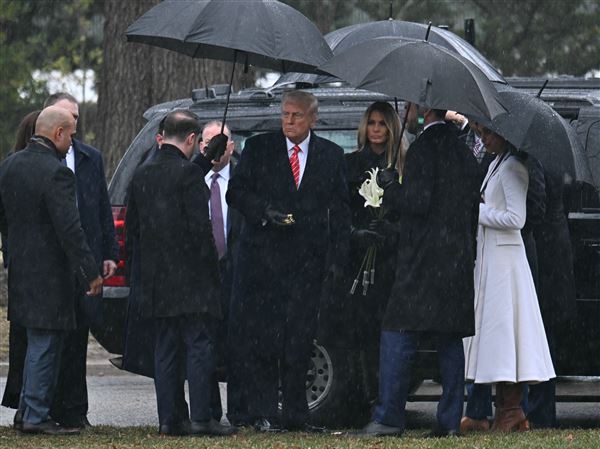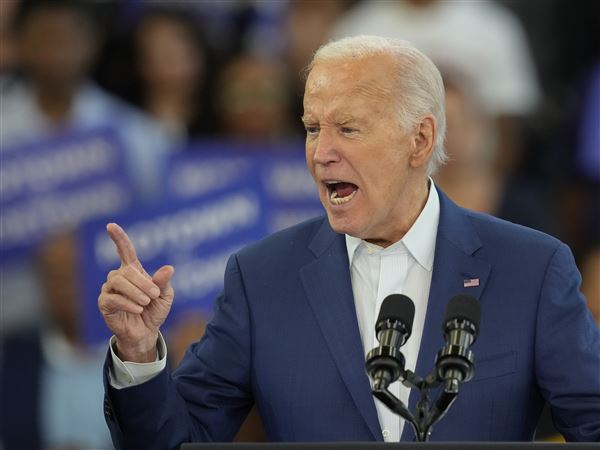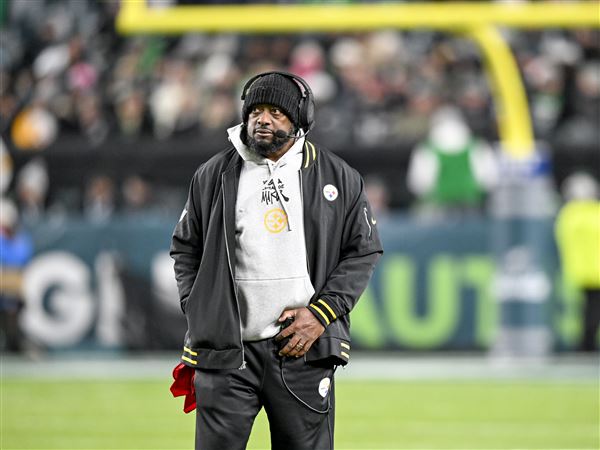Few of President Barack Obama’s achievements seem more imperiled from President Donald Trump than progress in combating climate change. To avert catastrophic climate change, the broadly accepted goal among climate scientists is to stay below 2 degrees Celsius (3.6 degrees Fahrenheit) of warming over pre-industrial temperatures. By helping negotiate the 2015 climate agreement in Paris and setting up a regulatory framework for fossil fuel emissions domestically, Mr. Obama created conditions that are necessary, but insufficient, to get there.
The plan was for his successor to go further by increasing the ambition of Mr. Obama’s climate rules, cracking down on methane leakage and completing the reform of fossil fuel leasing on public land that the Interior Department had just begun. Now that’s all off the table and Mr. Trump is planning to repeal every environmental regulation he can. Last month, he began by issuing executive orders to repeal the Clean Power Plan, which would have regulated carbon emissions from coal-fired power plants, and to lift the moratorium on coal leasing on public land. He’ll also review — and possibly strike — regulations on methane emissions and Mr. Obama’s order to factor the costs of climate change into regulatory decisions,
But that doesn’t guarantee a future with Manhattan and New Orleans underwater.
Global warming is a global problem. The rest of the world can, and looks increasingly likely to, compensate for American backsliding. “Trump can throw up roadblocks to progress and he can undermine the progress we’ve already made. But he can’t prevent us from being successful,” says Michael Brune, executive director of the Sierra Club. In the battle against climate change, the United States is no longer the lone superpower.
Mr. Trump will certainly make it harder to stay below 2 degrees Celsius. He is a flamboyant climate-science denier, even for a Republican. He tweets that cold winter weather in New York proves that there is no global warming, and he promised during the campaign to drop Mr. Obama’s biggest climate policies: the United States’ role in the Paris agreement and the Clean Power Plan, which would limit carbon emissions from coal-fired power plants. His budget request eviscerates environmental spending, eliminating climate programs entirely. Boosting fossil fuel extraction was a staple of Mr. Trump’s stump speeches. He repeatedly swore to approve every oil and gas pipeline, as he has already done with Keystone XL. Earlier last month, Environmental Protection Agency Administrator Scott Pruitt removed the Obama administration’s new reporting requirement for methane leakage in oil and gas drilling operations.
Mr. Trump’s strongest affection was for coal, for which he repeatedly professed his “love.” He implausibly promised to revive the dying coal industry — saying he would revoke every environmental regulation that harmed coal, not just those explicitly limiting carbon emissions. He signed a Congressional Review Act bill repealing the EPA’s Stream Protection Rule, which would have required coal companies to clean up waste from mountaintop removal mining and stop dumping it in waterways.
He also ordered the EPA to rescind or dial back its Clean Power Plan and lifted the Department of Interior’s moratorium on coal leasing on public land. He may lift EPA restrictions on conventional pollutants from coal, such as mercury and smog. Potentially even more damaging is his incipient rollback of the EPA’s Clean Car Rules. To the extent that Mr. Trump weakens the average fuel efficiency requirements for 2022 to 2025 models, he will directly increase emissions. The United States is responsible for just 14.4 percent of global emissions each year, and that share is dropping. But before many of these and other protections were in place, it had accounted for 27 percent of cumulative historical emissions, resulting in some 0.45C of warming that already has occurred, or will soon.
Yet for a true global setback, many other nations would need to abnegate their moral obligation to protect the planet. The president alone can’t rewrite laws such as the Clean Air Act and, more important, the federal government is hardly the only center of power in the fight against climate change. So far, the signs from those other actors, be it the national government of China or Democratic governors in the United States, are encouraging. And even the domestic path to unwinding progress is strewn with obstacles. “Even if the person is sitting in the Oval Office, no single person can stop climate change and no single person can kill the effort to stop climate change,” Mr. Brune says.
Mr. Trump’s greatest threat to the global battle against warming is his attitude toward the Paris agreement, which he will not push the Senate to ratify nor industry to work toward. Without further domestic climate action, the United States was already at risk of not meeting its emissions targets under Paris.
If Mr. Trump’s policies ensure that we miss those targets, it will undermine international faith in the United Nations Framework Convention on Climate Change process, of which the Paris agreement is a part. Even worse, Mr. Trump will still be president when global leaders reconvene in 2020 to ratchet up the ambition of their emissions pledges for 2025 to 2030. We can safely assume the United States won’t play the constructive diplomatic role that it did last time.
But those meetings will take place in November or December of 2020, after the next presidential election. If a climate hawk has just been elected president, other countries will know that the United States’ real intentions over the following four years can’t be gauged solely by Mr. Trump’s posture. And as the effects of climate change, from drought to sea-level rise, become tangible for large countries all over the world, their willingness to plow ahead without U.S. leadership increases. “For many countries, taking action is not because of the U.S. It’s in their own interest,” says David Waskow, climate director at the World Resources Institute, an international environmental policy research organization.
Even now, no other country has said it will back out of the Paris agreement, and the European Union pledged to fill the diplomatic void left by Washington.
China is far and away the most important global player on this subject. Already, it is the world’s biggest greenhouse-gas emitter, responsible for at least 11 percent of cumulative historical emissions and 0.17C of the 1.5C change already guaranteed. Based on its rate of population growth, those numbers could rise precipitously. But instead — after decades of rapid growth — its emissions have been stable or slightly reduced for the last three years, and it projects a drop of 1 percent in 2017. China is switching to clean energy, and its shift away from coal is contributing to a global slowdown in emissions. Over the last three years, even as the world economy has grown, emissions have stayed flat. China is on track to fulfill its promise from Paris to peak its carbon emissions by 2030, ahead of schedule. According to experts on Chinese environmental policy, it may have peaked already. In January, Beijing announced it will invest at least $360 billion in deploying renewable energy such as wind and solar from now through 2020.
China and India are also beginning to tackle transportation emissions, as they dramatically expand their train and subway networks. Globally, new coal capacity was down 62 percent last year over 2015.India, like China, suffers from severe smog in its major cities, and it is following suit. It has set ambitious goals for solar energy generation and is investing heavily in related infrastructure upgrades.
What’s more, it’s unclear whether Mr. Trump will be able to make much domestic progress on his rollback anyway. First, the law is not on his side. Mr. Trump does not want to regulate carbon or other fossil fuel-related pollutants under the Clean Air Act, but the statute and the Supreme Court say that he must. As Mr. Trump repeals the Clean Power Plan and updates limits on mercury, coal ash, and smog, he will face legal challenges that he may well lose. And then a future administration can pick up where Mr. Obama left off. “After the Bush administration, which unfortunately lasted eight years, the Clean Air Act was still in effect and the Obama administration started to set things right,” says David Doniger, director of the climate program at the Natural Resources Defense Council and a former EPA official. “It’s not a very satisfying thing to think of this as a 30-years war, but it’s longer than a four-year battle.”
Even if Mr. Trump implements his preferred policies, he cannot reverse coal’s decline (though perhaps he can slow it down). The energy sector is transitioning from coal to natural gas and renewables because their prices are dropping. Meanwhile, coal is slowly dying: The most easily accessible coal veins have already been tapped. Utilities are aware that coal’s regulatory noose will tighten again. “Anyone who is making an investment in a new power plant is looking to the future and saying, ‘This Trumpian timeout is not going to last. We need to plan for a future in which there are carbon pollution limits and we should anticipate that,’ ” Mr. Doniger says.In 2016, solar energy was the largest new source of domestic energy development. It is poised to grow even more rapidly in the years ahead.
Finally, the president is not the only domestic authority that matters for climate change. Some of the largest states, such as New York and California, are still moving to cut their emissions and transition to clean energy. It’s an odd fact of our federal system that energy utilities are largely regulated at the state level. Legislatures can require them to hit benchmarks for renewable energy, as many have. In the wake of Mr. Trump’s election, blue-state governments from Oregon to New York are looking to ramp up their climate action. As California Gov. Jerry Brown, a Democrat, memorably said after the election, his state “will launch its own damn satellite” if Mr. Trump cuts back on climate research.
Other important sectors, from energy-efficiency building codes to transportation policy, are managed mainly at the state and local level as well. Environmental activists have already been pressing on these levers, and they are shifting resources toward that instead of wasting them in Washington.
The Sierra Club, for example, has more than 170 employees working on grass-roots, locally focused clean-energy activism through programs such as Beyond Coal, which pressures utilities to shut down coal plants and forgo building new ones.Mr. Trump’s election dealt global climate progress a major setback, and that will be all the more true if he wins re-election in 2020. The narrow path to staying below 2C has gotten narrower still.
But hope for saving Earth is not yet lost. Climate hawks have lost a battle, not the war.
Ben Adler, a journalist in New York, is a former reporter for Grist, the Nation, Newsweek and Politico and has written for The New York Times, Atlantic, The Guardian and The New Republic. He wrote this for The Washington Post.
First Published: April 9, 2017, 4:00 a.m.















